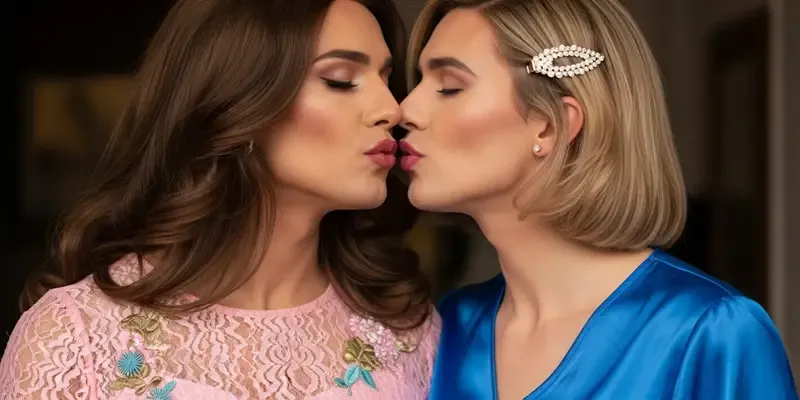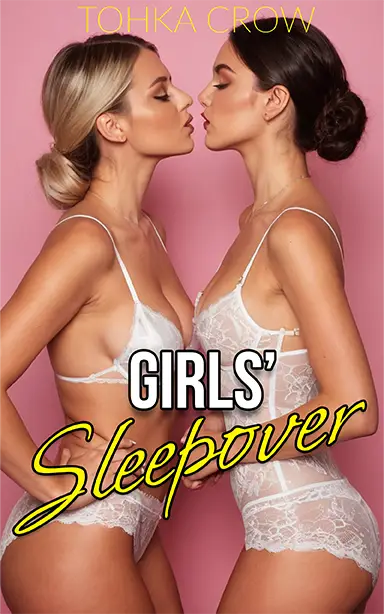
For centuries, humans have been pushing the boundaries of what we wear, stepping outside the lines of "men's clothes" and "women's clothes." This isn't just about fashion statements - it's a journey into the heart of who we are, how societies tick, and the magic of self-expression. Buckle up, because we're about to explore the fascinating world of crossdressing: its ancient roots, the impact it's had on cultures, what it reveals about our minds, and how it's thriving in the modern world.
Frequently Asked Questions (FAQ) about Crossdressing
Who are Crossdressers?
Crossdressers are individuals who wear clothing and accessories traditionally or stereotypically associated with a gender different from their own. This practice is a form of gender expression and can be adopted by anyone regardless of their gender identity or sexual orientation. Crossdressers may engage in this practice for various reasons, including self-expression, performance, comfort, or entertainment.
Are Crossdressers Gay?
Crossdressing is not inherently linked to a person's sexual orientation. While some crossdressers may be gay, many are heterosexual, bisexual, or identify with other orientations. The act of crossdressing is primarily related to gender expression rather than sexual orientation. It's important not to make assumptions about a crossdresser's sexual orientation based solely on their choice to crossdress.
Are Crossdressers Transgender?
Crossdressing does not automatically imply that an individual is transgender. Transgender people have a gender identity that does not align with their sex assigned at birth. In contrast, crossdressers do not necessarily experience a disconnect with their assigned gender; they may simply enjoy or prefer expressing themselves through clothing traditionally associated with another gender. While some transgender individuals may crossdress as part of their gender expression, the two are distinct and should not be conflated.
Is Crossdressing Common?
Crossdressing is more common than many might think, although exact numbers are hard to determine due to privacy concerns and societal stigma. The internet and online communities have revealed that crossdressing is a widespread practice, with individuals from various backgrounds and cultures participating in it. The increasing visibility and representation of crossdressers in media and popular culture suggest that it is a widespread phenomenon.
History and Evolution of Crossdressing
Ancient Roots and Religious Contexts
Imagine a world where gods and goddesses danced freely across gender lines. In ancient civilizations, crossdressing wasn't just about clothes, it was a way to tap into the divine. Take Inanna, the Sumerian goddess who could switch between flowing robes and sharp battle armor in a heartbeat. Or picture Dionysus, the Greek god of revelry, swirling in his iconic gown, challenging society's rigid notions of masculinity. These divine cross-dressers weren't just fashion rebels; they were paving the way for rituals and ceremonies where gender became a fluid expression of the soul.
Gender Roles in Early Theatre
Step back to Shakespeare's stage, where the spotlight shone only on men. Women were barred from acting, so young boys with nimble voices and sly glances stepped into Juliet's moonlit balcony and Cleopatra's jeweled throne. They mastered the art of the feminine whisper and the coy tilt of the head, blurring the lines between man and maid with every captivating performance. It was a practical solution, yes, but also a cheeky subversion of the strict gender roles of the time.
Crossdressing for Survival and Protest
History isn't just about gods and stage lights. In the 18th and 19th centuries, women like Harriet Moore donned breeches and boots, not for applause, but for survival. They navigated harsh landscapes, braved male-dominated professions, and even became doctors, all under the guise of a borrowed suit. Their courage whispered a revolutionary truth: sometimes, the fiercest warriors come in borrowed clothes. And even men, like the daring Bonnie Prince Charlie, donned petticoats and slipped away unseen, proving that rebellion can come in a surprisingly frilly package.
Modern Era: Expression and Art
Fast forward to our vibrant present, where crossdressing has become a kaleidoscope of self-expression. From soldiers finding solace in wartime drag shows to artists like David Bowie and Freddie Mercury painting their faces and rocking flamboyant suits, it's a way to say, "Look, I don't fit your box, and that's a beautiful thing!" It's a performance, a protest, a celebration of the endless possibilities that lie beyond the binary labels of "male" and "female."
So next time you see someone strutting down the street in a look that defies expectations, remember the rich tapestry of history woven into their clothes. It's a story of rebels and artists, of survival and self-expression, of simply being yourself, no matter what the world throws your way. And that's a story worth celebrating, in any outfit you choose!
What is Crossdressing?
Definition of Crossdressing
Crossdressing refers to the act of wearing clothes traditionally or stereotypically associated with a different gender. This practice has been part of various cultures from as early as pre-modern history, serving various purposes such as disguise, comfort, entertainment, and self-expression. Crossdressing is not exclusively linked to any particular gender or sexual orientation; it is a form of gender expression that can be embraced by anyone regardless of their gender identity.
Differentiating Crossdressing from Transgender Identity
It's crucial to distinguish between crossdressing and transgender identity. While crossdressing is about wearing clothes associated with a different gender, it does not necessarily imply a change in gender identity. Crossdressers typically do not consider themselves to be a different gender from the one they were assigned at birth. For example, a cisgender man may wear a dress and still identify as a man, thus crossdressing. In contrast, a transgender individual's gender identity does not align with the sex they were assigned at birth. If a transgender woman wears a dress, she is expressing her gender identity through her fashion choices, not crossdressing.
Motivations for Crossdressing
The motivations behind crossdressing are diverse and personal. People may crossdress for fun, as a form of artistic or theatrical expression, for political or social motives, or for comfort. Some engage in crossdressing only occasionally or in private settings, while others may do so more publicly and regularly. The rationale for crossdressing varies widely among individuals, and there's limited research on common characteristics among crossdressers. Importantly, crossdressing itself is not pathological and does not necessarily involve any distress or discomfort. For many, it's a fulfilling form of self-expression and exploration of gender roles
Understanding Gender and Societal Norms
The practice of crossdressing highlights the fluidity and socially constructed nature of gender. Gender roles and expectations are taught from a young age, shaping perceptions of what is considered appropriate for men and women. These societal norms can be restrictive, and crossdressing can be a way to challenge and play with these established conventions. Exploring gender through crossdressing can be a liberating experience for many, allowing for a more profound understanding and expression of one’s identity
Social and Psychological Perspectives on Crossdressing
Societal Views on Crossdressing
Societal attitudes towards crossdressing vary widely across different cultures and communities. In some societies, crossdressing is viewed with curiosity or as an artistic expression, while in others, it is met with judgment or misunderstanding. For example, in Singapore, crossdressing is generally not widely accepted, with crossdressers often being perceived as "weird" or wrongly associated with being homosexual. However, societal norms are changing, and fashion trends are increasingly blurring the lines between traditionally male and female attire. This shift is contributing to a slow but growing acceptance of crossdressing as a form of self-expression or a fashion choice.
Psychological Aspects of Crossdressing
From a psychological perspective, crossdressing is a complex phenomenon that is not linked to any specific mental disorder. People engage in crossdressing for various reasons, including fun, political motives, sexual reasons, or entertainment. It's a form of gender expression that does not necessarily correlate with an individual's sexual orientation or gender identity. Contrary to common misconceptions, crossdressing is not inherently linked to guilt or psychological distress. Instead, it can be a fulfilling and liberating practice for those who engage in it. The urge to crossdress varies among individuals; for some, it may be a lifelong practice, while for others, it may change over time.
Addressing Common Misconceptions and Stereotypes
There are several misconceptions and stereotypes about crossdressing that need to be addressed. Firstly, crossdressing does not necessarily indicate a person's sexual orientation or gender identity. Crossdressers are not automatically transgender; many are cisgender individuals expressing a part of their identity that differs from societal norms. Secondly, the act of crossdressing itself is not indicative of any psychological disorder. It's essential to understand that gender, as a social construct, is not as binary or rigid as traditionally thought. The association of specific clothing items with a particular gender is more a result of societal conditioning than an inherent quality of the clothing itself. Recognizing this can help in understanding and accepting crossdressing as a valid form of self-expression.
Crossdressing in Modern Society
Representation in Media and Popular Culture
Crossdressing has a long history in media and popular culture, with its roots tracing back to ancient times. In Ancient Greece, crossdressing was a common motif in plays, often used for both comedic and dramatic purposes. In modern media, crossdressing has been portrayed in various forms, from theatrical productions to films and television. Iconic examples include Shakespeare's use of crossdressing in his plays, Charlie Chaplin's comedic roles, and more recent portrayals in films like "Some Like It Hot" and "Tootsie."
These portrayals have evolved over time, reflecting changes in societal attitudes towards gender expression and identity. The character of Dr. Frank-N-Furter in "The Rocky Horror Picture Show" is another notable example, showcasing a more open and flamboyant expression of crossdressing.
The Role of the Internet and Online Communities
The internet and online communities have played a significant role in the evolution of crossdressing in modern society. These platforms have provided safe spaces for crossdressers to connect, share experiences, and find support. Online forums, social media groups, and websites dedicated to crossdressing and gender expression have helped many individuals explore and embrace their identities in a relatively private and supportive environment. The internet has also facilitated the exchange of information and resources, making it easier for people to learn about crossdressing, find role models, and access fashion and beauty tips tailored to their needs.
Legal and Social Acceptance in Different Parts of the World
Legal and social acceptance of crossdressing varies significantly across the world. In some countries, crossdressing and non-traditional gender expression are accepted and legally protected, while in others, they can lead to social ostracism, discrimination, or even legal penalties. Societies with more progressive views on gender and sexuality tend to offer greater acceptance and legal protections for crossdressers. However, even in these societies, crossdressers may still face challenges, including prejudice and misunderstanding. In contrast, in more conservative societies, crossdressers often face significant challenges, including legal restrictions and societal condemnation.
Overall, crossdressing in modern society is a reflection of evolving attitudes towards gender and identity. While there has been progress in terms of representation and acceptance, there is still a long way to go in achieving full acceptance and understanding of crossdressing and non-traditional gender expression across all societies.
Personal Stories and Experiences
In exploring the personal [crossdressing stories and experiences](https://femmedoll.com/crossdressing-stories), we gain insight into the diversity and richness of the crossdressing community. These narratives highlight the impact of crossdressing on personal life, relationships, and self-esteem.
Interviews and Anecdotes from Individuals Who Crossdress
The journey of crossdressers is often marked by a mix of curiosity, confusion, excitement, and fear. Shannon, an experienced crossdresser, shares that her early days of crossdressing were filled with a whirlwind of emotions, including excitement and fear of judgment. The process of embracing her identity as a crossdresser involved overcoming challenges, reaffirming her sense of self, and learning to express herself without fear or shame. Her experiences reflect a journey of self-discovery and self-acceptance, indicative of many in the crossdressing community.
The Diversity Within the Crossdressing Community
The crossdressing community is incredibly diverse, with individuals coming from various backgrounds and experiences. Each person's journey is unique, and their reasons for crossdressing can vary greatly. Some individuals may crossdress as a form of self-expression without it necessarily reflecting their gender identity. For others, crossdressing might be an integral part of their gender exploration, potentially leading to a deeper understanding of themselves as transgender or non-binary. This diversity is reflected in the myriad of stories shared within the community, each contributing to a richer understanding of gender expression and identity.
Impact on Personal Life, Relationships, and Self-Esteem
Crossdressing can have a profound impact on an individual's personal life, relationships, and self-esteem. For many, it leads to personal growth, greater self-acceptance, and confidence. It challenges individuals to assert their right to self-expression despite societal pressures, thereby building emotional resilience. Relationships can be affected in various ways, with some finding support and deeper connections, while others may face misunderstandings and challenges. The support and understanding of friends, family, and partners play a crucial role in the journey of a crossdresser.
Engaging with online communities and support groups provides a sense of belonging and a reminder that one is not alone. These networks offer advice, share experiences, and provide emotional support. They also serve as advocates for broader social acceptance, educating the public on the nuances of crossdressing and challenging stereotypes.
In sharing their stories, crossdressers contribute not only to their own well-being but also to the slow but positive shift in social consciousness towards greater understanding and acceptance of diverse gender expressions.
Resources and Support for Crossdressers and Their Loved Ones
Support Groups and Online Forums
Finding support and community is vital for crossdressers and their loved ones. Here are some valuable resources:
- OurPath: Offers support and resources for partners of transgender individuals, including books, articles, and podcasts on various topics related to gender identity and relationships (OurPath).
- Susan's Place Transgender Resources: This site provides a wealth of information, news, and resources for the transgender community, including crossdressers. It's a great place to find support and learn more about gender identity and expression (Susan's Place).
- Transgender Support Groups: Websites like TGGuide.com offer directories of local support groups for transgender and crossdressing individuals. These groups provide a space for sharing experiences and receiving peer support.
Educational Resources
For those seeking to understand more about crossdressing and transgender issues, educational resources are available:
Books and Articles: Look for literature that discusses gender identity and the experiences of crossdressers and transgender individuals. Websites like OurPath offer recommendations for books and articles that can be enlightening for both crossdressers and their loved ones.
Online Articles and Blogs: Platforms like Susan's Place offer articles, news, and opinion pieces that can provide deeper insights into the experiences and challenges faced by the transgender community, including crossdressers.
Tips for Crossdressers and Their Loved Ones
- Communication is Key: Open and honest communication is crucial in [understanding and supporting each other](https://femmedoll.com/crossdressing-tips-advice/cd-with-wife).
- Educate Yourself: Learn about gender identity and expression to better understand the experiences of crossdressers.
- Find Supportive Communities: Join online forums or local groups where you can share experiences and receive support.
- Respect and Acceptance: It's important to respect and accept each other's identities and expressions.
- Professional Help: If needed, seek professional counseling to navigate complex emotions or relationship dynamics.
Remember, every individual's journey is unique, and finding the right resources and support can make a significant difference in navigating the challenges and embracing the joys of this journey.
Conclusion: Embracing Diversity in Gender Expression
Summarizing Key Points
Our exploration into the world of crossdressing reveals its deep historical roots, diverse motivations, and the evolving societal perceptions that surround it. From its ancient origins in religious and theatrical contexts to its contemporary manifestations in media, fashion, and online communities, crossdressing has consistently served as a means of self-expression and identity exploration. The journey of crossdressing, entangled with societal norms and individual experiences, showcases the fluidity and complexity of gender expression.
The Importance of Understanding and Respect
Understanding and respecting diverse forms of gender expression, including crossdressing, is pivotal in fostering an inclusive and empathetic society. Acknowledging that gender expression is not confined to binary norms, but rather exists on a spectrum, is essential in appreciating the unique experiences and identities of individuals who crossdress. This understanding helps combat stereotypes, reduce stigma, and support the psychological well-being and self-esteem of those who engage in crossdressing.
Call to Action: Learn, Discuss, and Support
We encourage readers to further educate themselves about the nuances of gender expression and the experiences of those who crossdress. Joining discussions, participating in online forums, or engaging with local support groups can deepen understanding and empathy. We also urge readers to support causes and initiatives that promote gender diversity and inclusion. Whether through advocacy, volunteering, or simply offering a listening ear to someone's story, every action contributes to a more accepting and diverse society.
In conclusion, crossdressing, as a facet of the broader spectrum of gender expression, enriches our understanding of human diversity. By embracing and respecting these varied forms of expression, we pave the way for a more inclusive and understanding world.
Sources, Citations and Further Reading:
Ancient History of Cross-Dressing: From Ancient Religions to the Theaters
Source: Ancient Origins
The Empowering History of Cross-Dressing
Source: The Mia Wave
Link: https://themiawave.org/8383/all-stories/the-empowering-history-of-cross-dressing
Cross-Dressing in Historical Perspective
Source: Women's History Network
URL: https://womenshistorynetwork.org/cross-dressing-in-historical-perspective
Cross-Dressing
Source: Wikipedia
URL: https://en.wikipedia.org/wiki/Cross-dressing
Cross-Dressing | Definition by Lexicon Library.LGBT
Source: Lexicon Library.LGBT
URL: https://lexicon.library.lgbt/definitions/cross-dressing
Understanding Cross-Dressing
Source: Go Ask Alice!
URL: https://goaskalice.columbia.edu/answered-questions/understanding-cross-dressing
Crossdressing: Blurring the Lines Between Genders
Source: We Can Singapore
URL: https://wecan.aware.org.sg/crossdressing-blurring-the-lines-between-gender
The Psychology of Cross-Dressing
Source: The School of Life
URL: https://www.theschooloflife.com/article/the-psychology-of-cross-dressing
Transphobia in the Media: Crossdressing as a Point of Fear and Comedy
Source: Apollon Undergraduate Journal
A Short History of Cross-Dressing in Media
Source: Flavorwire
URL: https://www.flavorwire.com/153705/a-short-history-of-cross-dressing-in-media










Comments (1)
Emily
2025-09-11
I’m a bi sexual male. I know for sure I should have been born female. I crossdress and love it. I’m divorced now so I can crossdress around the house now. But, living in the south it’s tough to get out crossdressing. A woman is who I should be and it’s tough not being able to express that to my full capacity. Any advice you can give me would be great. Thanks!!